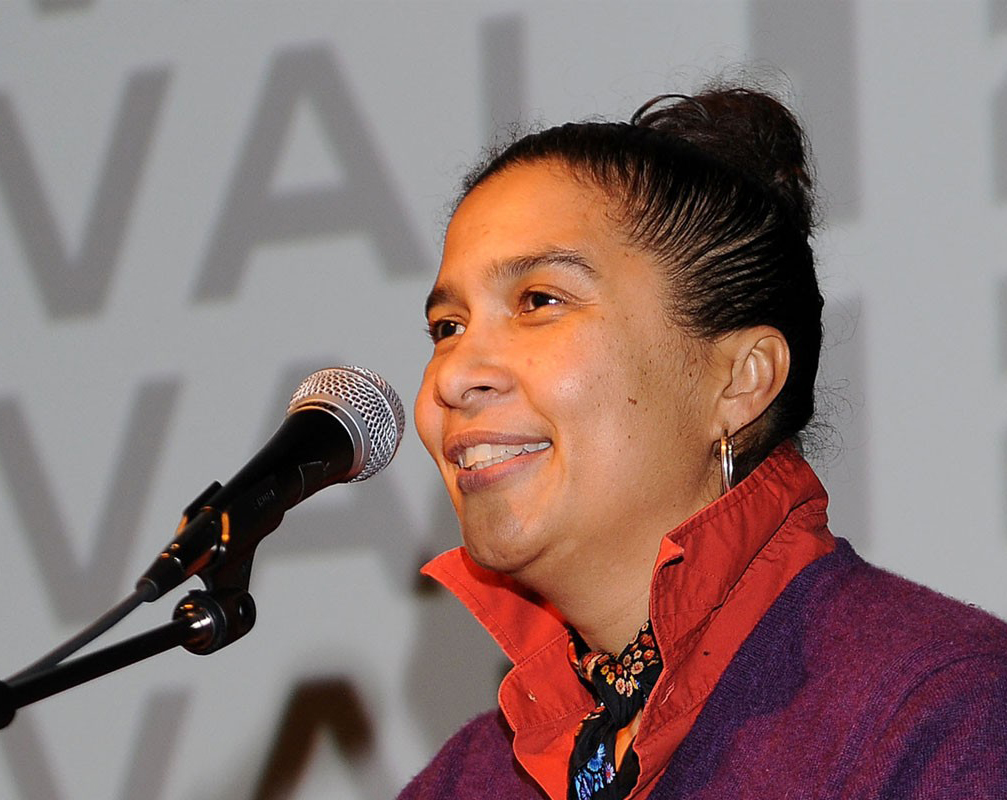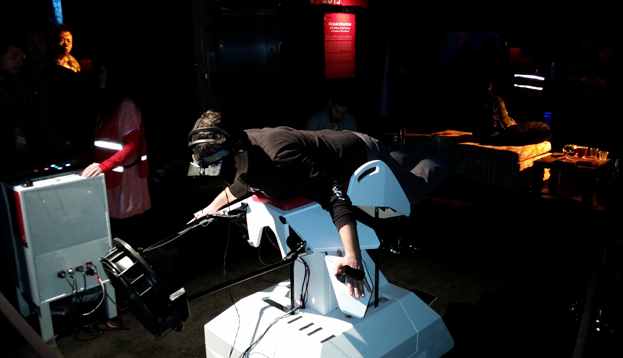This year will likely be etched in history as the birth of virtual reality beyond gaming. At the 2015 Sundance Film Festival (which just wrapped up Feb. 1), the majority of the New Frontier technology projects focused on VR. Everywhere you turned there was someone immersed in a short story being told through an Oculus Rift, Google Cardboard or Samsung Gear VR. Indie developers have embraced the technology that was literally born at this very festival three years ago, when Lucky Palmer debuted his Oculus VR prototype to attendees in collaboration with journalist Nonny de la Peña for the VR experience, Hunger in Los Angeles.
 Shari Frilot
Shari Frilot
Shari Frilot, who’s been curator of the New Frontier showcase since 2007, watched as Luckey’s technology first wowed gamers through Kickstarter, then enticed Mark Zuckerberg to pay $2 billion for Oculus VR, opened up new gaming experiences like CCP Games’ EVE Valkyrie (which was on display at last year’s New Frontier), and now has given independent filmmakers a brand new medium to explore storytelling. Frilot explains why Hollywood is mesmerized by VR and why storytellers are experimenting with gamification in this exclusive interview from the festival.
What impact do you see companies like Facebook, Samsung and Sony getting behind VR having on it as a medium for filmmakers of all types?
There’s a certain validating quality to it, but there’s also the resources, experience and the financial power and infrastructure that these companies can provide to something that’s quite experimental at this stage. It paves the way for others to make the leap to this medium. It’s important that Facebook bought Oculus because people know what Facebook is. They maybe didn’t know what virtual reality was, but Facebook buying Oculus creates an awareness of what virtual reality even is. So on the basic level of pop culture awareness, it really helps. Companies like Sony, Samsung and Fox have infrastructures that they’re invested in bringing things to market. So they can be there to work with the content creators to get things finished, and to pick up the slack financially to make sure that works get made and advertised. Remember, anything that you’re trying to put out there that’s telling a story also has to be marketed, so all that experience of marketing and distribution will be tapped to grow this field of virtual reality.
“It’s important that Facebook bought Oculus because people know what Facebook is. They maybe didn’t know what virtual reality was, but Facebook buying Oculus creates an awareness of what virtual reality even is.”
How have you seen Fox embrace VR?
They have the Fox Innovation Lab and they’re presently engaged in learning how to tell stories. They produced Felix & Paul’s experience, Wild, which is at New Frontier. And you can really see the distinction when a big studio gets involved with creating an experience that is separate from just repurposing footage from the set. This is an original production with the stars of Wild, but that experience doesn’t happen anywhere in the movie and it was shot in a different place. It was made independent of the film, almost like a DVD extra or a documentary about the movie. Fox can do this and they can do it really fast, faster than filmmakers who are making this work on their own dime.
What do you see virtual reality opening up for filmmakers as we see these types of short films and experiences here at Sundance?
For filmmakers, this is a whole new way to do special narrative that is only going to become more and more robust, whether they do these in chapters or whether they do these in longer formats. There can be room for both, and it’s been proved quite clearly in the success of a number of pieces that you can have a linear narrative that people really enjoy. They don’t necessarily have to have a fully branching interactive piece.
“For filmmakers, this is a whole new way to do special narrative that is only going to become more and more robust, whether they do these in chapters or whether they do these in longer formats.”
How have you seen video games blend into New Frontier this year?
There are a lot of interesting intersections with gaming and storytelling here. There’s 1979 Revolution, which tells the story of the Iranian Revolution and is also being developed for Oculus. There’s Possibilia, which was funded by Xbox Originals and is an example of gaming your way through a film experience, because you’re actually putting together a way to tell the story by selecting scenes through iPads. You’re experimenting and learning something about the nature of breaking up through this film. So it’s like gaming to the truth of breaking up. Way to Go is more like a traditional game, but it’s also going through a cinematic filmic experience that’s more abstract. It’s a beautiful work with hand-painted animation and 360-degree controls both on a big screen and through VR. Derive, to a certain extent, engages you a little bit like a micro game as you play and interact with the city that you’re descending upon. Even Assent, the VR experience by artist Oscar Raby, isn’t necessarily a game, but there’s an interaction that you find in games that you don’t find in traditional cinema. You can explore any given scene in that experience for as long as you want until you decide that you want to move on, and you choose how you move on. You have some choices, and when I think about telling stories through gaming, I think about making choices. That’s really the mechanism of storytelling through the gaming process. So there’s a lot of that here.

